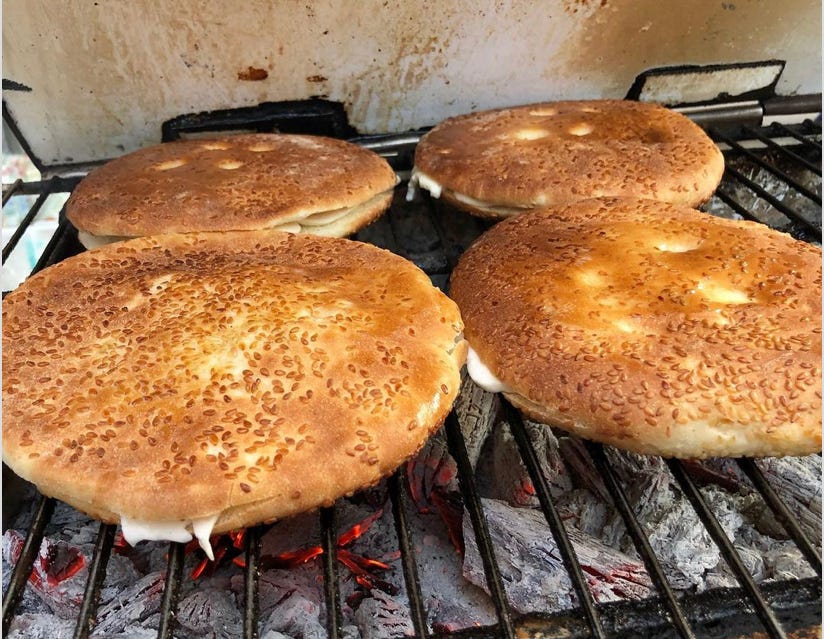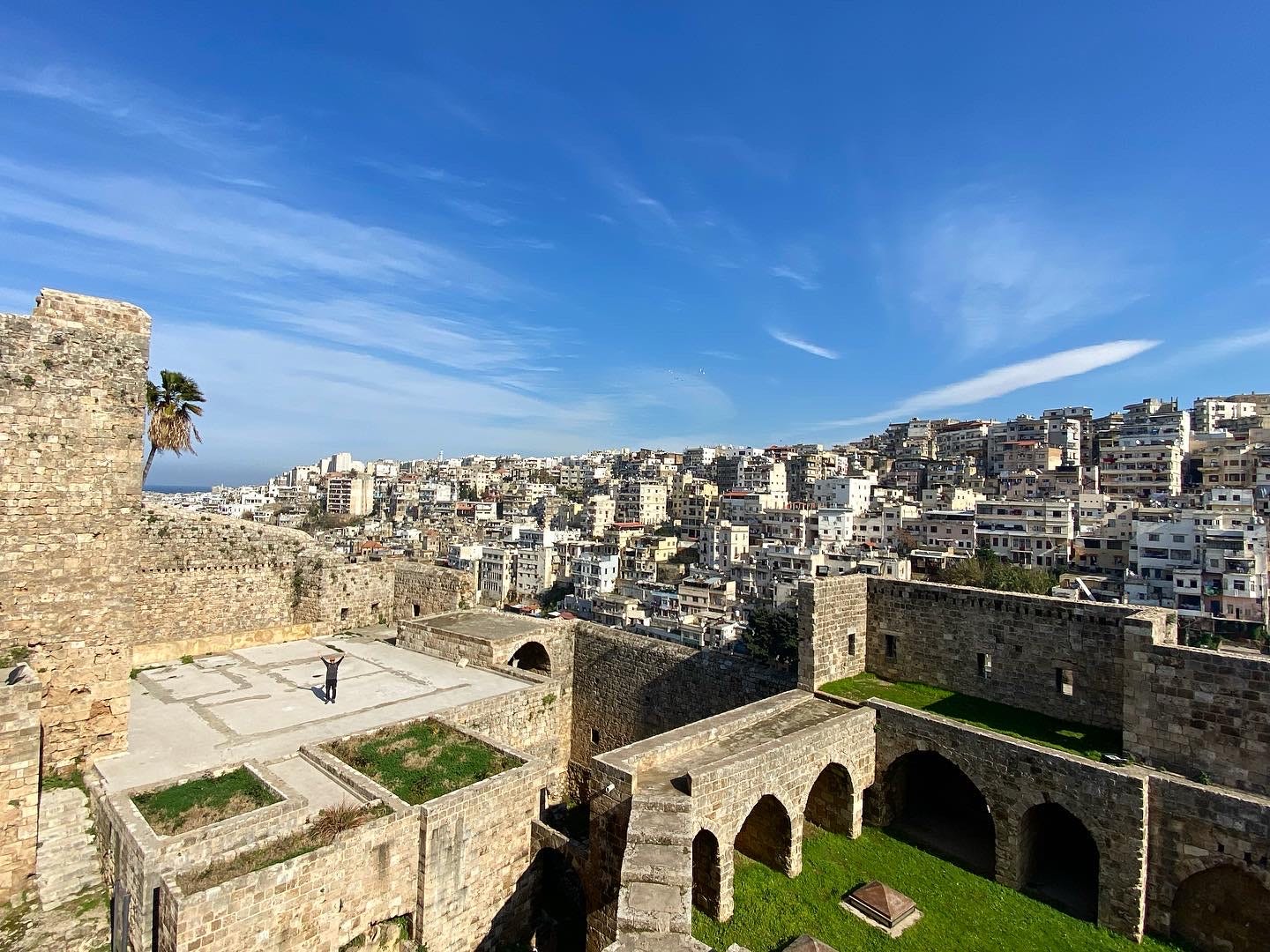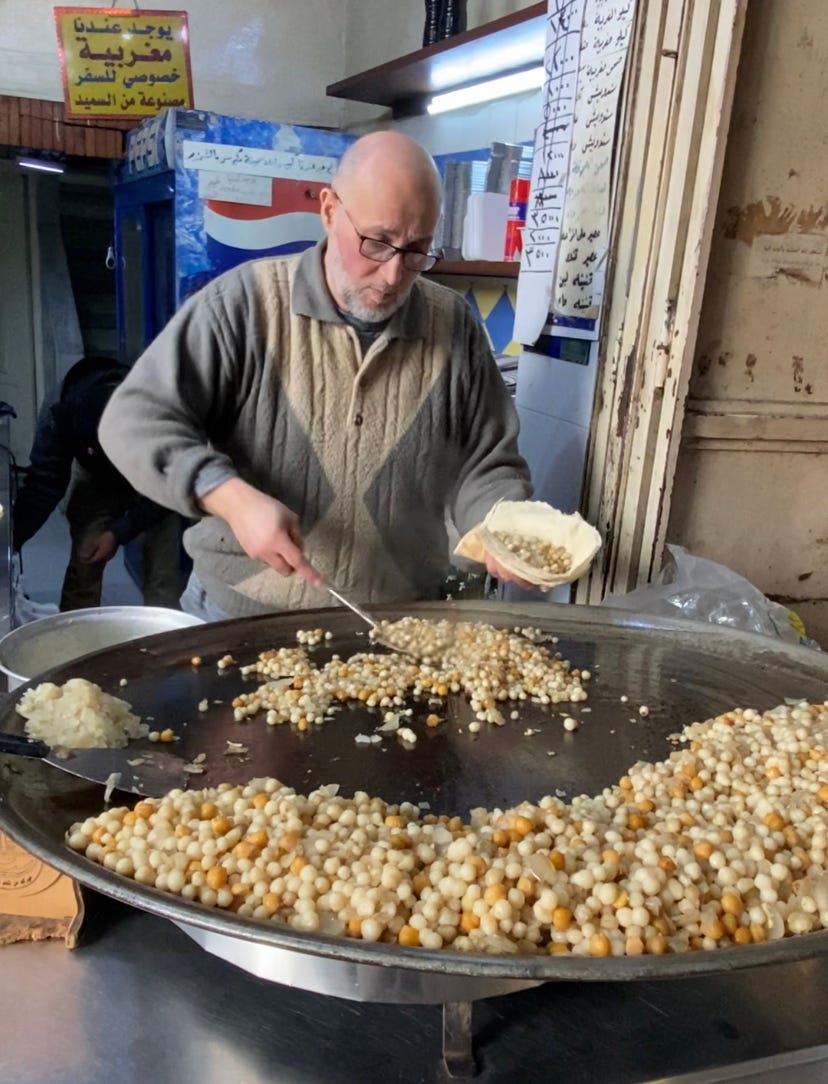Treats in Tripoli
For the second half of our time in Lebanon, we home-based in the ancient seaside town of Byblos (just 30km north of Beirut) and took day trips by bush taxi-style bus* up the coast to Tripoli and Batroun.
Tripoli (not the one in Libya!) is only 85 kilometers from Beirut (~45 minutes from Byblos), but feels worlds apart. It’s Lebanon’s second-largest city, infamous as the most impoverished city on the Mediterranean and a “hotbed” of extremism and sectarian violence, and famous for its crusader fortress, medieval Mamluk architecture (similar to Cairo — foreshadowing our next stop!), the best souk in the country, and…dun dun dunnnnn…its sweets!
We arrived around midday and got started snacking right away. En route to the Citadel we picked up a couple cheese sandwiches from a man grilling (literally) in the middle of the street. These bébés, called ka’ak with akkawi cheese—chewy sesame-studded bread, tangy/salty cheese, like a Lebanese bagel—fueled us for a few hours of castle exploration.
Post-Citadel we meandered the souk (market), stumbling across a man making the famous moghrabieh wraps, only found in Tripoli! (Turns out this guy is The Guy who invented these sandwiches—we accidentally did so well!) Imagine really big couscous, sautéed with chickpeas and onions and spices, garnished with pickled beets and cucumbers and wrapped in two laters of super-thin fresh flatbread. I think this was my favorite thing I ate in all of Lebanon. Bold words but I stand by them.
As we stood outside the stall, marveling at the moghrabieh, a few locals stopped by for a cheesy sandwich experience. We watched the owner knead cheese (with semolina I think) and spread it thick on a sandwich for them, and immediately motioned to secure our own. It’s called kaak bi-knafeh—sweet ka’ak—cheese and semolina, rolled in powdered sugar and served thick on a sesame roll. Imagine mozzarella texture but ricotta flavor, with powdered sugar dusting your fingers like a donut.
Ok our next mission was to find the specific sweets for which the city is famous: znoud el sett and halawet et-jeben. On this I’ll have to admit only partial success. We walked all around the souk and surrounding streets, making a detour to see the super-weird post-apocolypitc-feeling World’s Fair site that started construction in 1963, stopped for the civil war in 1975, and just…continues to exist abandoned in the middle of the city.
We saw some sweet shops along the way, but most looked mostly Turkish—we didn’t see the white little bundles of cheesy goodness that are halawet el-jeben. Finally, before catching our bus we made a last-ditch effort and stopped in at Tom Sweets (maybe related to the famous Hallab and Tom? Who knows). They didn’t have the halawet, but score on the znoud el sett!
These are usually translated as "Lebanese ladies’ fingers, but the words actually mean “the upper arms of a woman.” These little pastries (first of all, they look nothing like any part of a woman) are phyllo dough filled with thick cream, deep fried and soaked in orange blossom and rose water, and garnished with candied rose petals.
(Fun fact: Tripoli was once famous for its oranges, and the public parks there are completely full of orange trees that are completely full of ripe oranges! We have no idea who’s allowed to pick them.) We bought a whole package of pastries for good measure and took them with us back to Byblos.
—
* Bush taxis are what these private bus services are called in West Africa. You stand on the side of the highway at an unmarked but designated place. A van—varying from empty to completely packed to the gills—pulls up (barely stopping), an assistant swings open the door and you shout at the driver where you want to go. He either shakes his head and continues driving or you cram yourself in for the ride.











